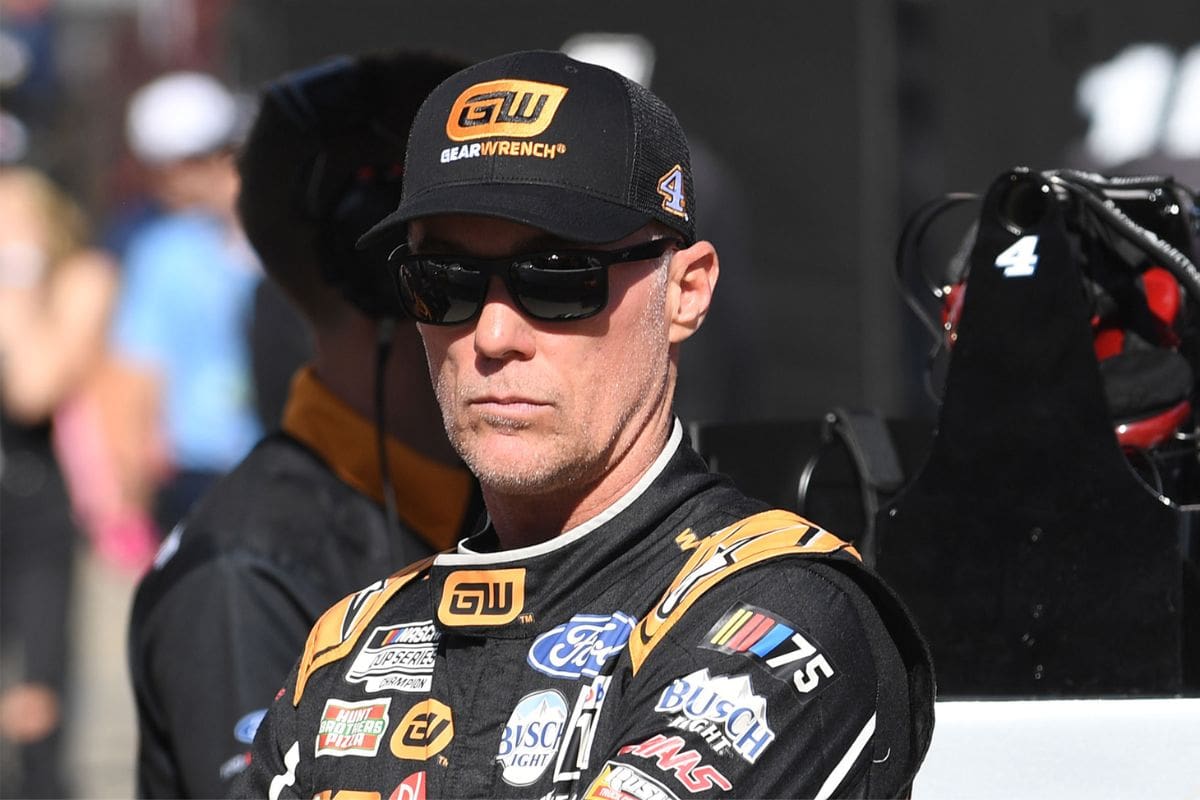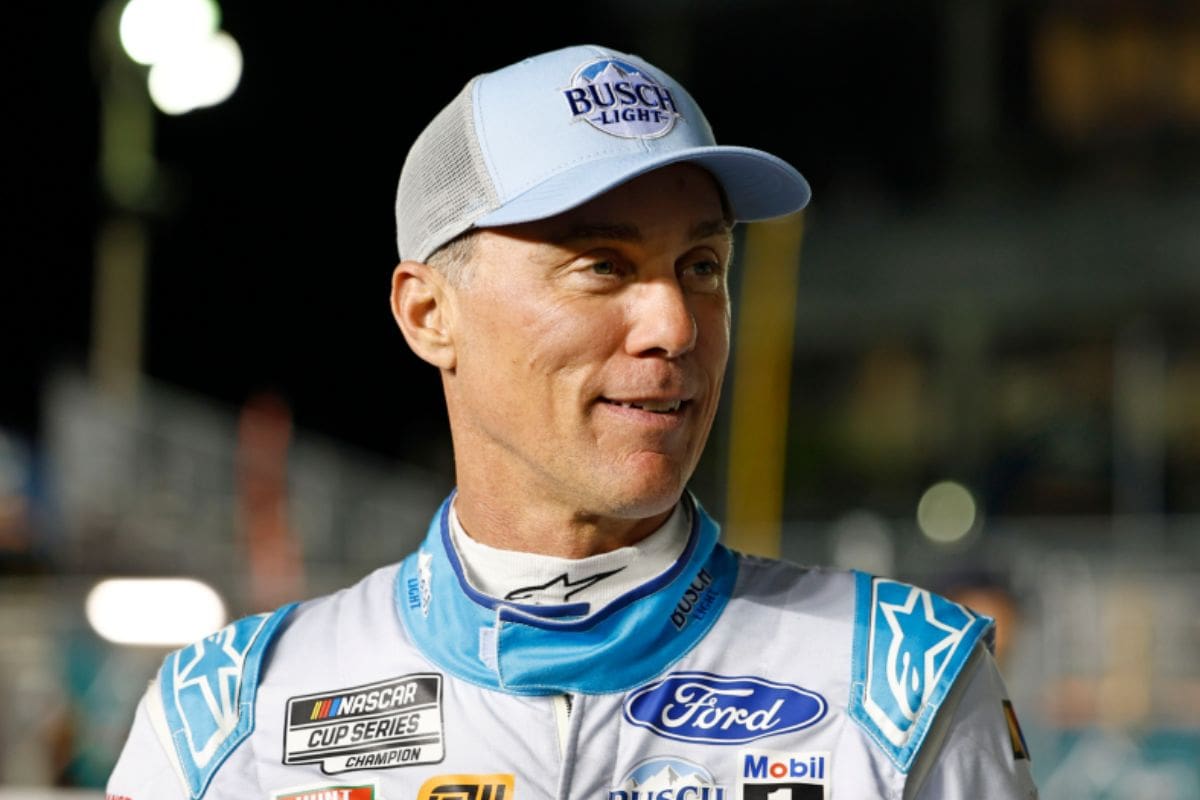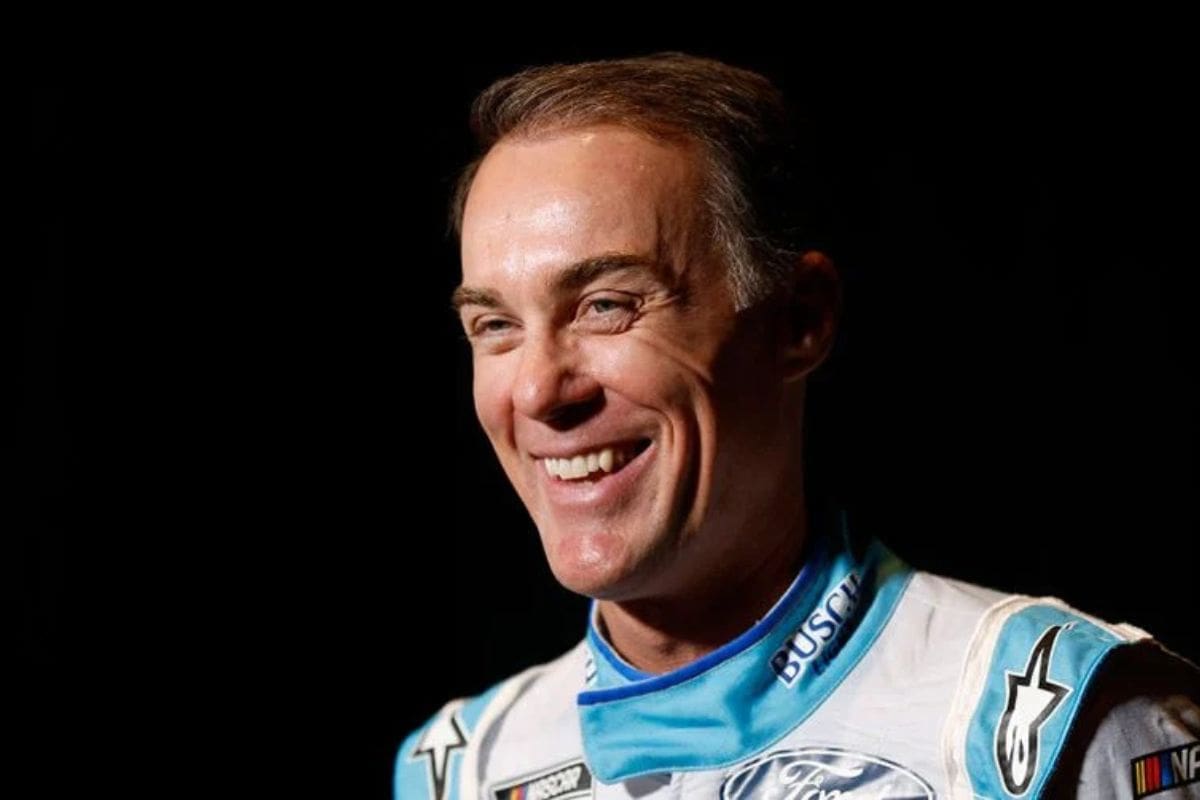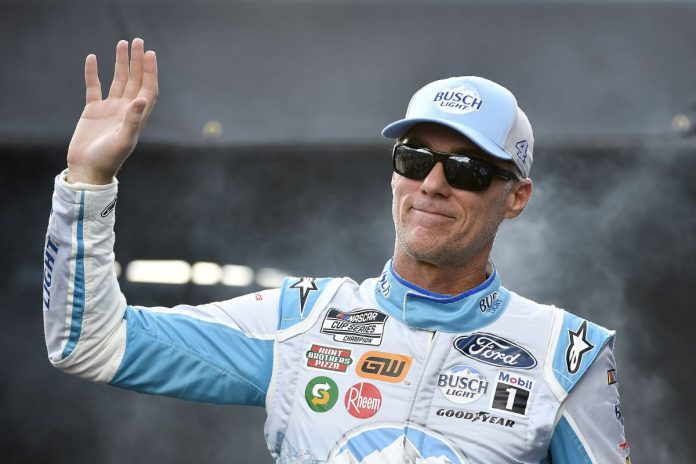Kevin Harvick’s Crew Chief Reveals Reality: Kevin Harvick’s crew chief has highlighted the stark realities rookies face in NASCAR, emphasizing the challenging journey from newcomer to seasoned pro. With the sport’s evolution driven by technological innovation and strategic awareness, rookies encounter a steep learning curve. Limited real-world experience and intense competition from veterans make for a formidable barrier to success. The key to overcoming these obstacles lies in mental resilience, adaptability, and continuous improvement. A strong support system and strategic race-day decisions play critical roles. This insight sheds light on the complexities of climbing the NASCAR ladder, suggesting there’s more complexity behind rookie drivers’ journeys in this high-stakes arena.
Key Takeaways
- Rookies face a steep learning curve with limited real-world experience in NASCAR.
- Limited practice and testing opportunities hinder rookies’ development and adaptability.
- Experienced veterans provide formidable competition, making it challenging for rookies to succeed.
- Emphasis on theoretical learning and simulation-based training is crucial for rookies’ progress.
- Success for rookies in NASCAR requires driving prowess, adaptability, and resilience amidst tough competition.
The Evolution of NASCAR
The landscape of NASCAR has undergone a remarkable transformation, driven by continuous innovations in crew chiefs’ strategies, engineering advancements, driver insights, and manufacturer contributions, yet the core challenge for drivers to excel on the track remains unaltered. This division between change and constancy forms the crucible within which every NASCAR driver hones their craft. The evolution is not merely a proof of the sport’s dynamic nature but also a clarion call to drivers: adapt or fall behind.
Crew chiefs, with their strategic acumen, have become essential in navigating the complexities of race day decisions. Their role transcends the traditional bounds of vehicle maintenance, delving deep into analytics to tailor strategies that leverage the driver’s strengths and the car’s capabilities. This synergy between human insight and data-driven decision-making exemplifies the nuanced evolution of NASCAR.
Parallelly, engineering innovations have redefined the boundaries of what’s possible on the track. From advancements in aerodynamics to the integration of cutting-edge materials, each leap forward has precipitated a shift in racing tactics. These engineering marvels not only enhance performance but also elevate the safety standards, allowing drivers to push the envelope with a modicum of reassurance.
Manufacturers, too, have played a crucial role in this evolution, investing heavily in research and development to ensure their marques remain competitive. This symbiotic relationship between teams and manufacturers underscores a broader trend: the relentless pursuit of excellence.
Amidst this whirlwind of innovation, the essence of NASCAR remains – a test of skill, courage, and determination. It’s a reminder that, regardless of the changes around them, drivers’ resolve to conquer the oval is what truly defines the sport.

Insights from Kevin Harvick’s Former Crew Chief
Rodney Childers, moving from his time with Kevin Harvick to guiding rookie Josh Berry, sheds light on the critical role of confidence in navigating the complexities of NASCAR’s competitive arena. Childers, with a wealth of experience and success from his tenure with Harvick, brings an invaluable perspective on what it takes to thrive in the high-stakes environment of professional racing. His insights, particularly on the essential nature of confidence, offer a profound understanding of the psychological factors that greatly influence driver performance.
In reflecting on Josh Berry‘s journey, Childers doesn’t just focus on the technical skills required to handle a race car at breakneck speeds. Instead, he explores deeper into the mental and emotional fortitude needed to navigate the pressures and expectations inherent in NASCAR. This approach highlights an important aspect of motorsports that often goes unnoticed by the casual observer: the sheer mental resilience and self-belief required to compete at the highest level.
Childers’ emphasis on confidence as a cornerstone of success in NASCAR is not just about maintaining a positive mindset. It’s about the complex relationship between a driver’s self-assurance and their ability to make split-second decisions on the track, adapt to rapidly changing conditions, and recover from setbacks without losing momentum. His insights illuminate the nuanced challenges that rookies face, highlighting the importance of mental toughness and adaptability in a sport that is as mentally demanding as it is physically.
Through his guidance, Childers aims to equip Berry with the tools necessary to forge a successful path in NASCAR, demonstrating the crucial role of psychological strength in achieving mastery within the sport’s competitive landscape.
Challenges Faced by Rookies
Exploring the competitive terrain of NASCAR, newcomers like Josh Berry face important challenges, including limited practice opportunities and testing, which are vital for their development and success in the sport. These hurdles, as identified by Rodney Childers, Kevin Harvick’s crew chief, spotlight the steep learning curve rookies must navigate to achieve proficiency and competitiveness at NASCAR’s elite level. The scarcity of testing and practice sessions not only curtails the rookies’ ability to familiarize themselves with their cars and tracks but also limits their exposure to high-pressure racing environments, which is key for their growth and confidence as drivers.
One cannot overstate the impact of these constraints on a rookie’s performance. In a sport where milliseconds can determine the difference between victory and defeat, the lack of real-world experience significantly disadvantages newcomers. Often, they face seasoned veterans who have gained extensive track time and refined their skills through numerous races. This difference in experience creates a formidable barrier to entry, making the path to success for rookies a challenging endeavor.
Moreover, the current structure of NASCAR, with its limited opportunities for practice and testing, places an emphasis on theoretical learning and simulation-based training. While beneficial, these methods cannot fully replicate the complexities and unpredictability of actual racing conditions. This gap in experiential learning further exacerbates the challenges faced by rookies, making their journey to the top tiers of NASCAR not only a test of their driving prowess but also their adaptability and resilience in the face of these substantial obstacles.

Strategies for Improvement
Acknowledging the steep learning curve faced by rookies, Rodney Childers, Kevin Harvick’s crew chief, outlines several strategies aimed at enhancing Josh Berry’s performance in the NASCAR series. These strategies are not merely about overcoming the initial hurdles but are designed to build a strong foundation for a successful career in racing.
The approach detailed by Childers revolves around key areas of improvement:
- Consistency on the Track: Emphasizing the importance of maintaining a steady pace and avoiding mistakes that can cost valuable positions. It’s about learning the nuances of each circuit and adapting driving styles accordingly to guarantee reliability and predictability in performance.
- Smooth Pit Stops: Recognizing that races can be won or lost in the pit lane, the focus is on honing pit stop strategies. This involves rigorous practice sessions aimed at reducing stop times, improving communication between the driver and the crew, and perfecting tire changes and refueling tactics.
- Achieving Top-10 Finishes: Setting significant goals is essential for a rookie’s confidence and development. Targeting top-10 finishes provides a tangible objective that motivates the team and the driver, fostering a culture of continuous improvement and the pursuit of excellence.
- Maximizing Opportunities: Understanding that setbacks are part of the journey, the strategy includes learning from every race, whether it ends in victory or disappointment. This means analyzing performance, identifying areas for improvement, and being ready to capitalize on any opportunity that arises on the track.
“Hopefully we can keep giving him good cars on the weekends and he can focus on the things that he can do better and not have to worry about whether we’re going to take wedge in or out or whatever after practice. So, we just kind of, we just got to keep putting them together you know like putting weekends together have nice smooth stops not make mistakes and just knock out some top 10 and the more you knock out those top 10 you know the more chances you’re going to have a win in a race.”
Josh Berry’s Potential and Outlook for Martinsville
Drawing on his extensive experience in short-track racing, Josh Berry is positioned as a formidable competitor at the upcoming Martinsville Speedway event. His background, coupled with recent promising performances, sets the stage for a potentially successful outing. Berry’s adeptness at negotiating the complexities of short tracks, a skill honed over years of racing, aligns perfectly with the challenges Martinsville presents. This synergy between driver skill and track characteristics could very well translate into a standout performance.
Berry’s momentum is not solely a product of his driving prowess. The support from his team, which has been working tirelessly to fine-tune the car’s setup for Martinsville, plays a vital role. This collaborative effort aims to leverage Berry’s short-track acumen, maximizing his potential for success.
| Factor | Impact on Josh Berry’s Martinsville Outlook |
|---|---|
| Short-Track Experience | High confidence and familiarity with similar track dynamics |
| Recent Performances | Positive momentum and team morale boost |
| Team Support | Enhanced car setup and strategic planning |
| Track Characteristics | Alignment with Berry’s driving style, offering a competitive edge |
| Momentum | Psychological advantage and heightened focus |
As the race approaches, Berry’s combination of skill, team support, and strategic alignment with Martinsville’s demands positions him as a racer to watch. The anticipation surrounding his performance is not just about the potential for a strong finish but also about the broader implications for his trajectory in the sport. Berry’s outlook for Martinsville encapsulates the blend of talent, preparation, and strategy that defines NASCAR’s competitive essence.

News in Brief
The journey of newcomers within NASCAR, as explained by Kevin Harvick’s former crew chief, highlights the demanding challenges and steep learning curve faced by rookies in this ever-changing sport.
Strategies for enhancement, along with the potential observed in drivers like Josh Berry, emphasize the resilience and adaptability needed to succeed.
This analysis not only illuminates the realities of entering such a competitive arena but also accentuates the critical role of mentorship and strategic development in maneuvering the complexities of NASCAR.
Our Reader’s Queries
Q: Who is Kevin Harvick’s spotter?
A: Tim Fedewa, who previously served as Kevin Harvick’s spotter, is set to spot for Ryan Blaney in 2024, as confirmed by the team.
Q: Who was Kevin Harvick’s crew chief in 2001?
A: In the 2003 season, Harvick partnered with crew chief Todd Berrier in the Cup Series. Their successful collaboration, stemming from their previous Busch championship win in 2001, culminated in victory at the prestigious Brickyard 400 in Indianapolis.
Q: Who took Kevin Harvick’s place?
A: Josh Berry is a NASCAR rookie who has joined Stewart-Haas Racing, taking over the position previously held by former Cup champion Kevin Harvick, who retired after the 2023 season. Berry steps into a significant role within the team as he continues his career in the NASCAR Cup Series.
Also Read: Kevin Harvick Exposes Intense Side of Richard Childress Racing!



